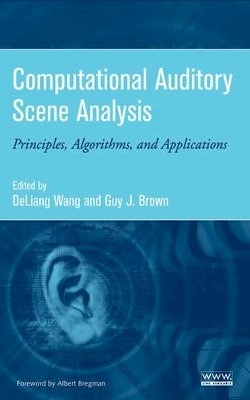
Stock image for illustration purposes only - book cover, edition or condition may vary.
Computational Auditory Scene Analysis
Deliang Wang
€ 183.69
FREE Delivery in Ireland
Description for Computational Auditory Scene Analysis
Hardcover. How can we engineer systems capable of "cocktail party" listening? Human listeners are able to perceptually segregate one sound source from an acoustic mixture, such as a single voice from a mixture of other voices and music at a busy cocktail party. Editor(s): Wang, DeLiang; Brown, Guy J. Num Pages: 396 pages, Illustrations. BIC Classification: UYU. Category: (P) Professional & Vocational. Dimension: 235 x 165 x 25. Weight in Grams: 720.
How can we engineer systems capable of "cocktail party" listening?
Read moreHuman listeners are able to perceptually segregate one sound source from an acoustic mixture, such as a single voice from a mixture of other voices and music at a busy cocktail party. How can we engineer "machine listening" systems that achieve this perceptual feat?
Albert Bregman's book...
Product Details
Format
Hardback
Publication date
2006
Publisher
John Wiley and Sons Ltd United States
Number of pages
396
Condition
New
Number of Pages
424
Place of Publication
, United States
ISBN
9780471741091
SKU
V9780471741091
Shipping Time
Usually ships in 7 to 11 working days
Ref
99-50
About Deliang Wang
Editors DeLIANG WANG and GUY J. BROWN are well-known for their contributions to the development of CASA. Wang is a Professor in the Department of Computer Science and Engineering and the Center for Cognitive Science at The Ohio State University. He is an IEEE Fellow. Brown is a Senior Lecturer in the Department of Computer Science at the University of...
Read moreReviews for Computational Auditory Scene Analysis
